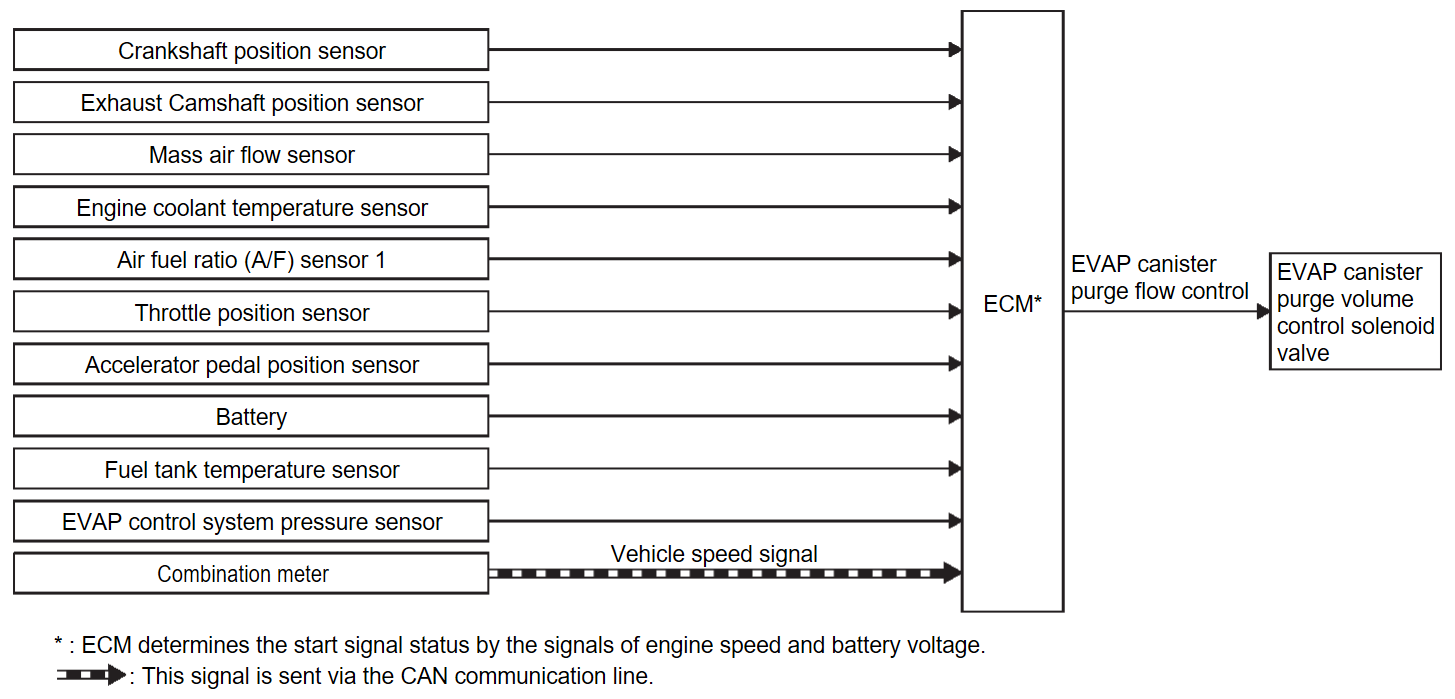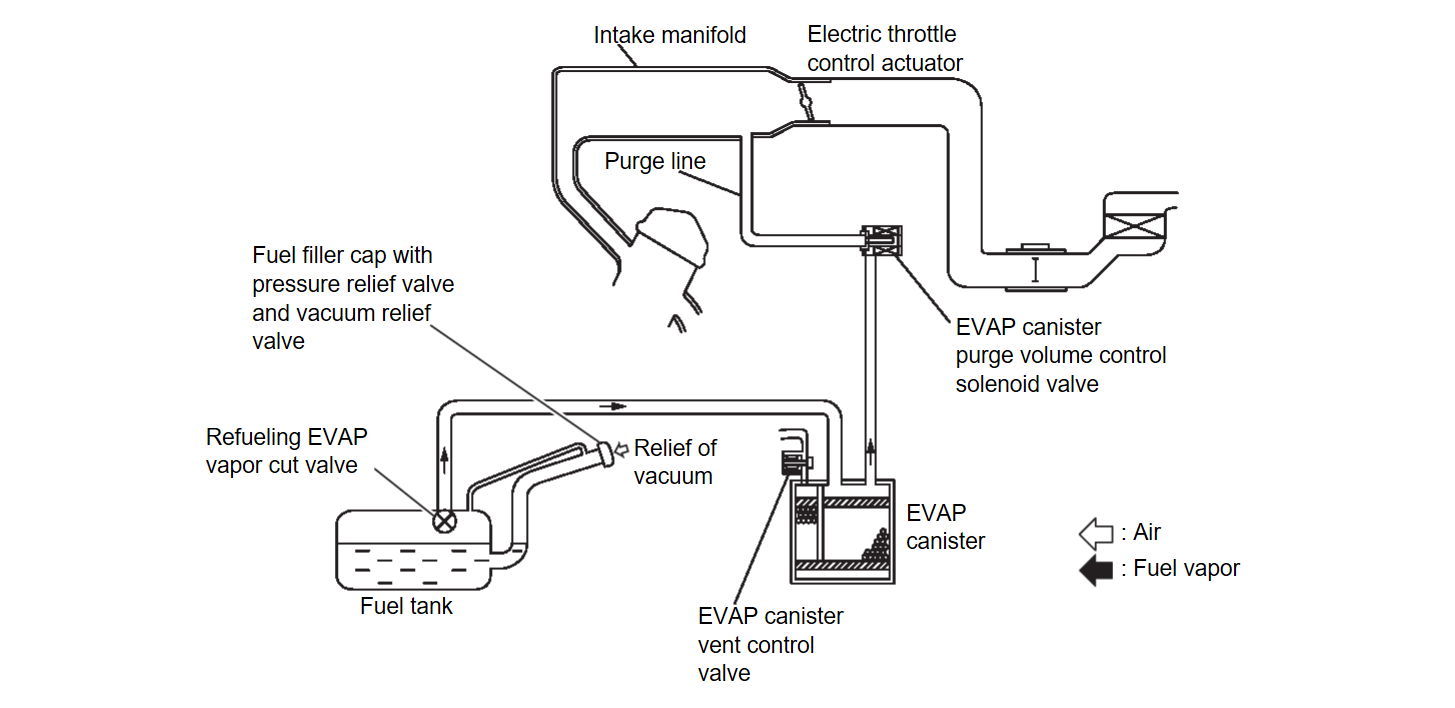System Description
SYSTEM DIAGRAM
| Component parts | Function |
| Crankshaft position sensor | Refer to Crankshaft Position Sensor . . |
| Exhaust camshaft position sensor | Refer to Exhaust Camshaft Position Sensor . . |
| Mass air flow sensor (With intake air temperature sensor) | Refer to Mass Air Flow Sensor (With Intake Air Temperature Sensor) . . |
| Engine coolant temperature sensor | Refer to Engine Coolant Temperature Sensor . . |
| Air fuel ratio (A/F) sensor 1 | Refer to Air Fuel Ratio (A/F) Sensor 1 . . |
| Throttle position sensor | Refer to Electric Throttle Control Actuator . . |
| Accelerator pedal position sensor | Refer to Accelerator Pedal Position Sensor . . |
| Battery | ECM detects the battery voltage. |
| Fuel tank temperature sensor | Refer to Fuel Tank Temperature Sensor . . |
| EVAP control system pressure sensor | Refer to EVAP Canister Vent Control Valve . . |
| Combination meter | It transmits the vehicle speed signal to ECM via CAN communication. |
| ECM | Refer to ECM . . |
| EVAP canister purge volume control solenoid valve | Refer to EVAP Canister Purge Volume Control Solenoid Valve . . |
INPUT/OUTPUT SIGNAL CHART
| Sensor | Input signal to ECM | ECM function | Actuator |
| Crankshaft position sensor Camshaft position sensor | Engine speed*1 | EVAP canister purge flow control | EVAP canister purge volume control solenoid valve |
| Mass air flow sensor | Amount of intake air | ||
| Engine coolant temperature sensor | Engine coolant temperature | ||
| Battery | Battery voltage*1 | ||
| Throttle position sensor | Throttle position | ||
| Accelerator pedal position sensor | Accelerator pedal position | ||
| Air fuel ratio (A/F) sensor 1 | Density of oxygen in exhaust gas (Mixture ratio feedback signal) | ||
| Fuel tank temperature sensor | Fuel temperature in fuel tank | ||
| EVAP control system pressure sensor | Pressure in purge line | ||
| Combination meter | Vehicle speed*2 |
*1: ECM determines the start signal status by the signals of engine speed and battery voltage.
*2: This signal is sent to the ECM through CAN communication line.
SYSTEM DESCRIPTION
The evaporative emission system is used to reduce hydrocarbons emitted into the atmosphere from the fuel system. This reduction of hydrocarbons is accomplished by activated charcoals in the EVAP canister.
The fuel vapor in the sealed fuel tank is led into the EVAP canister which contains activated carbon and the vapor is stored there when the engine is not operating or when refueling to the fuel tank.
The vapor in the EVAP canister is purged by the air through the purge line to the intake manifold when the engine is operating. EVAP canister purge volume control solenoid valve is controlled by ECM. When the engine operates, the flow rate of vapor controlled by EVAP canister purge volume control solenoid valve is proportionally regulated as the air flow increases.
EVAP canister purge volume control solenoid valve also shuts off the vapor purge line during decelerating.
![[Previous]](../../../buttons/fprev.png)
![[Next]](../../../buttons/fnext.png)

